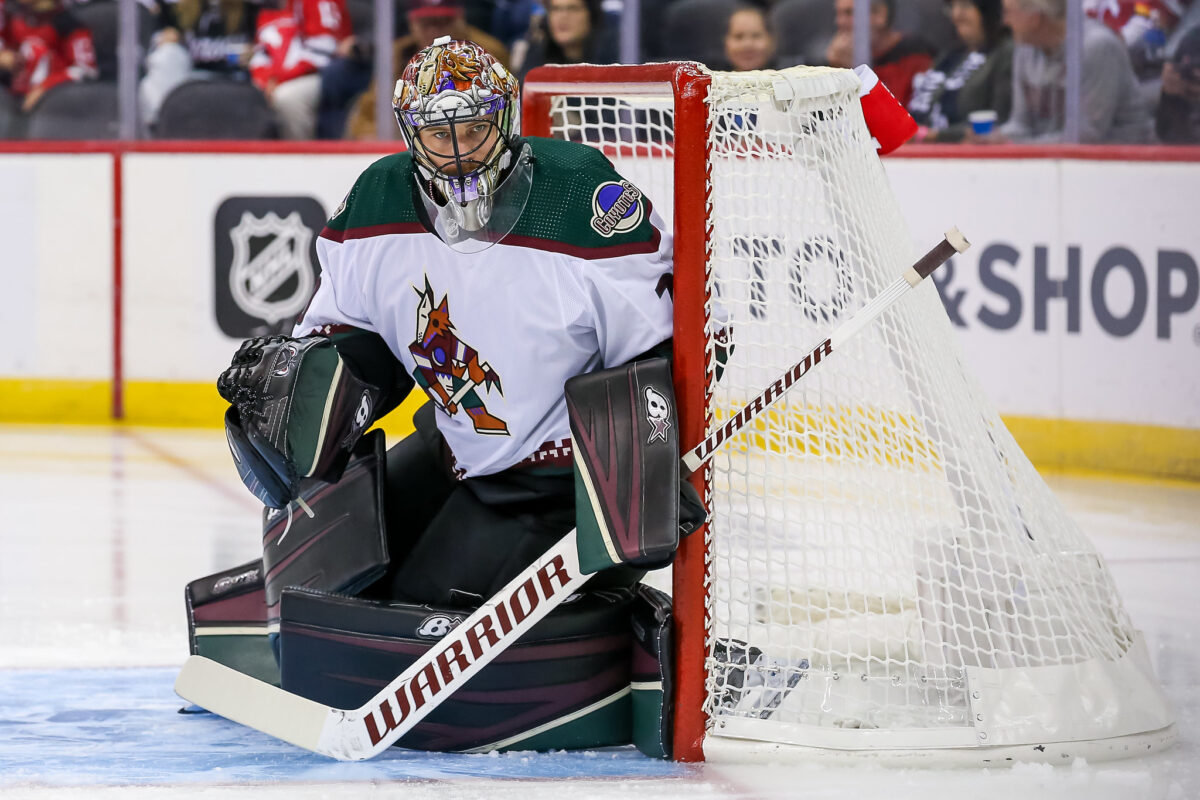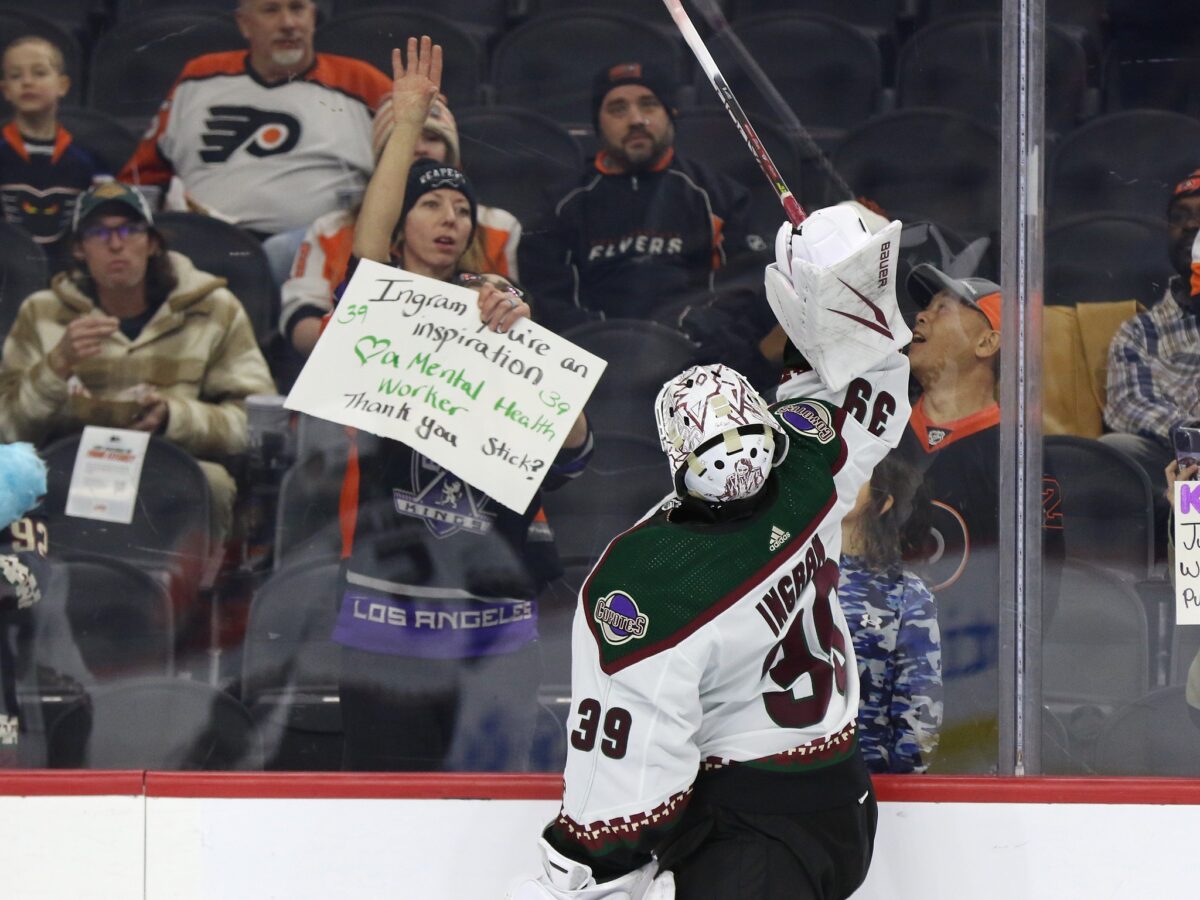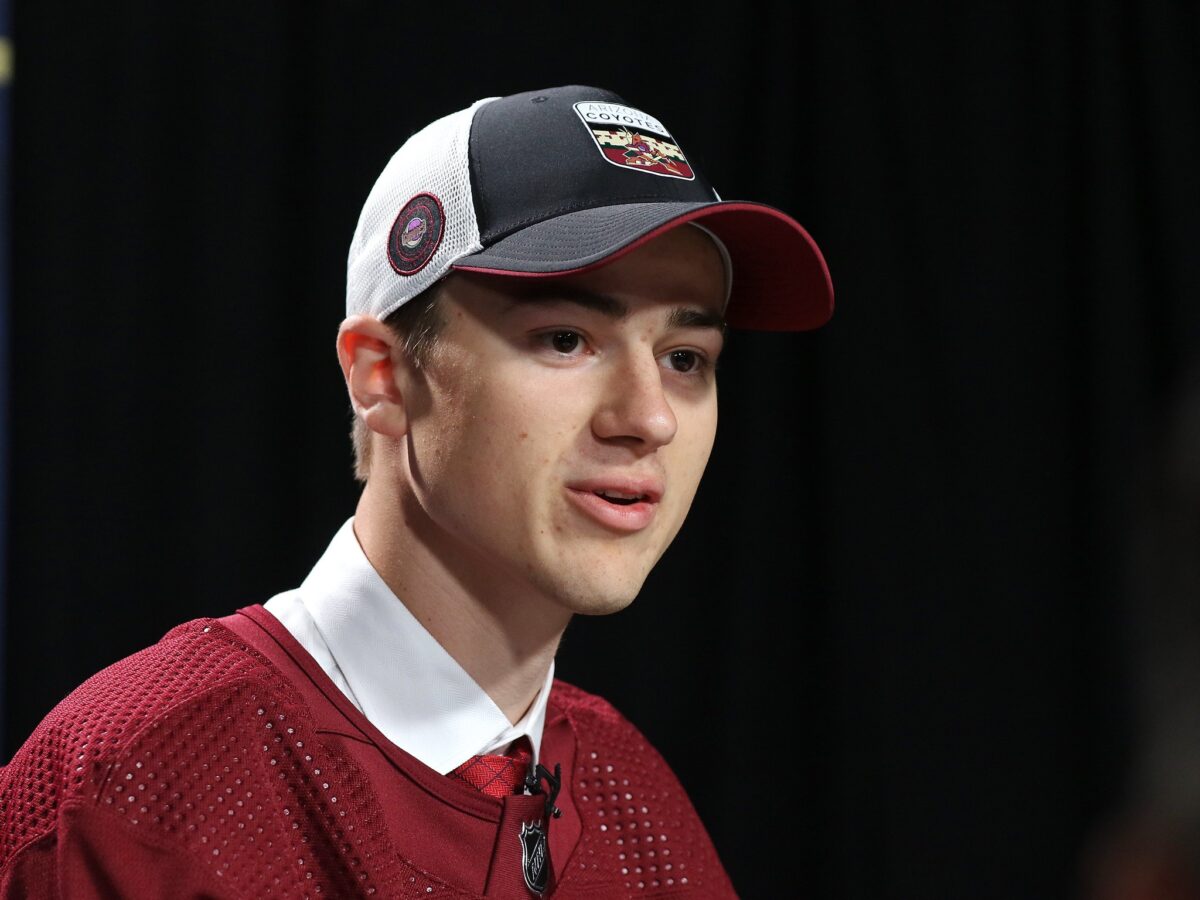As teams gear up for an expected busy trade deadline, the Arizona Coyotes are trying to figure out their own struggles. A hot start to the 2023-24 NHL season has been put out since the beginning of the new year. The metaphorical wave of good fortunes the Coyotes were riding for the first half of the season has gone steady well before reaching nirvana (season’s end).

For general manager Bill Armstrong, things couldn’t have gone worse, and at the wrong time. The Coyotes entered the All-Star Break at the right time. Struggles started to plague the team, but yet they remained in a prime spot to make a push for the final wild card spot. That dream was short-lived, however, as the team has yet to win since returning from the break.
Part of these struggles can be summed up to key players going cold, arena rumors, etc. But an underlying part that hasn’t been brought to light as much is the team’s goaltending, which has been very hot and cold this season. Which ponders the team’s future regarding who’s in their crease when the rebuild ends or even next year?
Goaltending Has Struggled to Be a Factor
Entering the season with a newfound sense of hope in the desert, the big question wasn’t, “Would goaltending be an issue?” No, the question was, “Could Connor Ingram take the starting spot from Karel Vejmelka?” Both splits starts for the first month or so of the season, until Nov. 25, when the Coyotes headed into Vegas for a matchup. That night sparked the beginning of Ingram’s journey from almost quitting the sport to becoming a starting netminder.
The Coyotes would go on to win that game against the Golden Knights 2-0. Ingram’s dominance didn’t stop there. They proceeded to win the next four straight games, all against the previous five Stanley Cup champs, the first team to ever win consecutive games against the last five Cup winners. Vibes were higher than ever in the Valley of the Sun, and the Coyotes seemed like they had found their first true netminder since the days of Darcy Kuemper.
Related: Coyotes Have a Deep Goaltending Pipeline
What happened next was something no one had expected. Like a flash of lightning, as fast as Ingram rose, he fell. He would go on to post a 7-11-3 record after pulling off five straight wins. In nine of those 11 losses, he’d allow four or more goals. His magic had run dry, and an injury would sideline him for some time. Since returning and to this date, he currently boasts a record of 17-13-3 record, with a 2.80 goals-against average and a .911 save percentage.
His partner, Vejmelka, has been on the worse end of the stick. Everyone knows the appropriately nicknamed ‘Veggie” and his journey to the NHL. He arrived in Arizona ahead of the 2021-22 season from Czechia, where he had spent the entirety of his career. Expected to spend the season in the American Hockey League (AHL), he would instead start the year as the backup to Carter Hutton before ultimately succeeding him as the team’s starter.

Vejmelka’s numbers weren’t flashy, for obvious reasons, but his play is what caught the attention of the league. He was the sole reason the Coyotes were able to remain close in games during the first two seasons of their rebuild. Entering the 2023-24 season, many expected Vejmelka to blossom under a more competitive roster, but he’s instead regressed. To date, he’s posted a record of 6-15-2, with a 3.62 goals-against average and a .893 save percentage. His numbers rank at the bottom of the league. What started as a promising sign from both through the first two to three months of the season has instead quickly turned into an underlying issue.
Pipeline Isn’t Ready to Make the Next Step
If this goaltending duo isn’t the right pair to lead a competitive team, then who is? Some will look at Matthew Villalta, who Armstrong signed to a one-year deal during the offseason. He’s currently been a big factor in the team’s minor league affiliate, the Tucson Roadrunners, success. He’s posted a record of 22-13-1 to date, with a 2.61 goals-against average and a .911 save percentage. He’s been a big part of what’s been going on in the Old Pueblo.
So why not call him up? Well, the Coyotes did just that after the injury to Ingram, and he played well, but he showed exactly why he’s not ready for the NHL just yet. It’s worth mentioning he’s a restricted free agent (RFA) this offseason, so unless Armstrong sees him as part of the long-term plan, it’s best to keep him in Tucson to help the Roadrunners make a run for the Calder Cup.

After Villalta is Dylan Wells, who signed a contract with Tucson after the expected next man to make the leap. Former goalie Ivan Prosvetov was claimed off waivers by the Colorado Avalanche during the offseason. Wells, for the most part, has struggled at the professional level and is an unrestricted free agent (UFA) this offseason, leaving him out of the equation.
From there, the Coyotes have five goaltending prospects who are all years away from either making the NHL or even making an impact. The five include: Anson Thornton, Carsten Musser, Rasmus Korhonen, Melker Thelin, and Michael Hrabal. Of the five, Thornton is the only one currently playing professionally with the ECHL’s Reading Royals after starting the season in Tucson. Hrabal, the team’s 38th overall pick in the 2023 NHL Draft, is believed to have the highest ceiling and is expected to be the team’s future number one goalie.
More Questions Than Answers
The Coyotes have more questions than answers regarding the status of their crease in terms of the future. Ingram is signed through the 2025-26 season, while Vejmelka is signed through the 2024-25 season. Neither is expected to be moved at the trade deadline unless a deal comes along that Armstrong simply can’t pass on. Nor are we saying neither won’t be back next season. The Coyotes have not made any statements regarding changes to their goaltending pair.
The underlying concern is, as the team gets better, will the current duo be able to be a factor or a harm to the team’s success? Will Villalta be re-signed, and is he a part of the future? Obviously not all of the team’s recent struggles can be directly correlated to goaltending. This is simply a frustrated team in the middle of a rut. But with a division that will only get better and a pipeline that is years away from making the leap, the Coyotes need to figure out their goaltending situation for their future’s sake.
